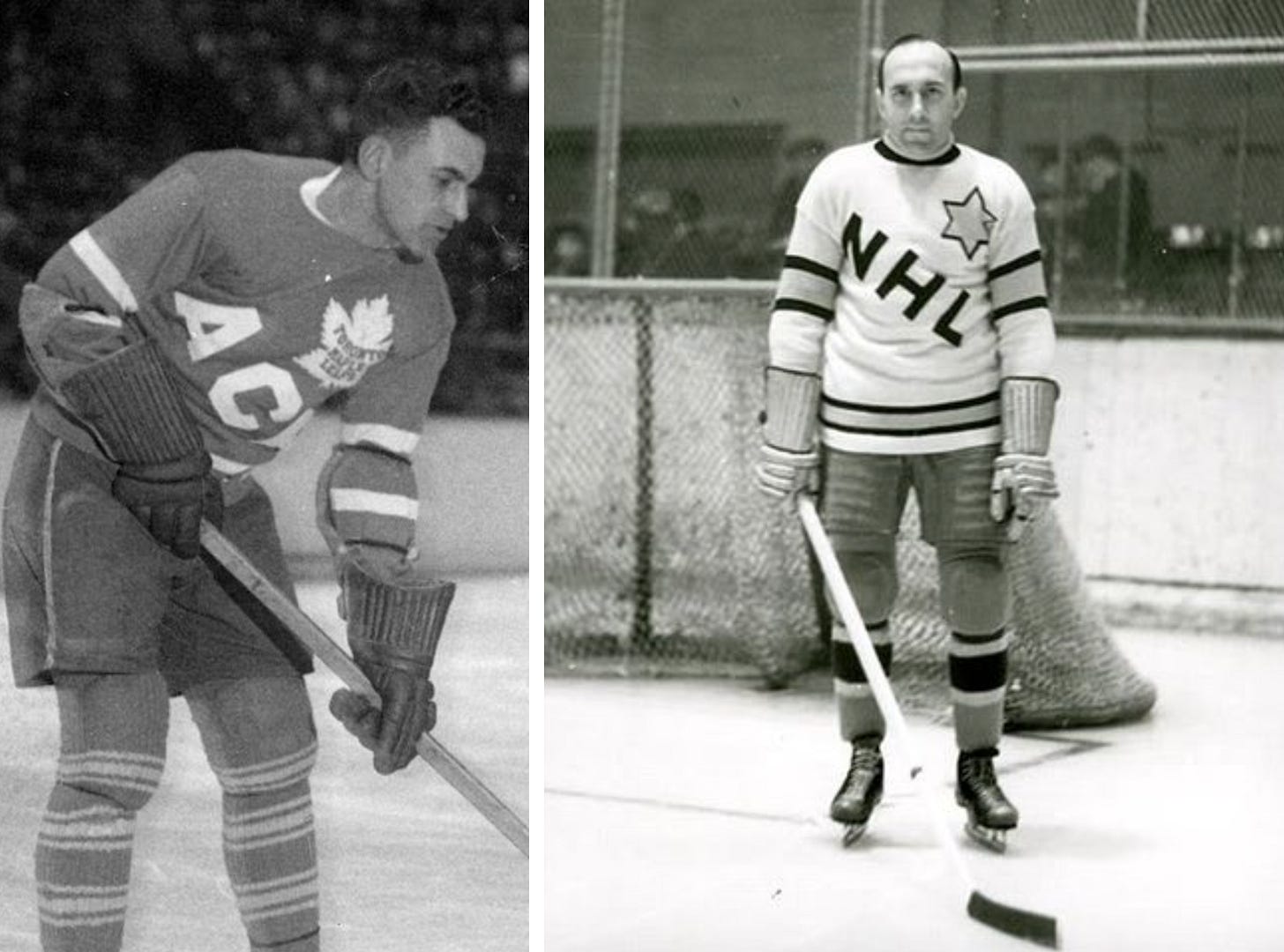We’re approaching the weekend before the Super Bowl, which means it’s also the weekend of the NHL All-Star Game, the latest edition of which will take place on Saturday afternoon in Toronto. This year’s uniforms are a complete disaster, but there was a time when the annual midseason showcase was a good-looking affair, and we’re going to look back on some of those games today.
The NHL All-Star Game has had an interesting evolution. The first three “all-star games,” all of which took place in the 1930s, weren’t part of an annual promotion but were instead charity benefits to help out the families of players who’d either died or been injured. The league’s first formal All-Star Game didn’t take place until 1947.
And even then, the annual exhibition wasn’t much like the one we’re used to today. Among other things:
The NHL had only six teams, and no separate divisions, until the late 1960s. So for most of the years from 1947 through 1968, the All-Star Game featured the defending Stanley Cup champs, wearing their regular uniforms, playing against an All-Star squad drawn from the remaining five teams. (The only exceptions were 1951 and ’52, when the league experimented with a “USA vs. Canada” format, with one team drawn from the Rangers, Red Wings, Bruins, and Chicago, and the other from the Canadiens and Maple Leafs.) It wasn’t until 1969 that the first “East vs. West” game took place. And the league has gone back and forth with several different formats since then.
The All-Star Game originally took place before the start of the season, not in the middle of it. That changed in 1967.
It used to be common for the league to go through long periods of sticking with the same All-Star uniform design. That uniforms from that first true All-Star Game in 1947, for example, remained the standard through 1959! No subsequent set has had that long a tenure, but four-, five-, and even eight-year runs weren’t uncommon until the 2000s, when the league got in the habit of introducing a new design each year.

This is the part where I say the whole point of reading a uni-ranking article is to feel affirmed and validated if you agree with the writer’s picks, or outraged and argumentative if you disagree. So for those of you who fall into the latter camp, feel free to voice your displeasure in the comments. With that caveat, here we go, counting down my top 10 picks:
10. The Three All-Star Benefit Games (1934, 1937, and 1939)
I’m putting these three at the bottom of the top 10 because they weren’t official NHL All-Star Games in the way that we normally think of that annual event, even though some of the uniforms might rank higher on their aesthetic merits.
So: In 1934, Maple Leafs player Ace Bailey suffered a career-ending injury and was left with significant medical bills, so a benefit game was organized, with Bailey’s Toronto teammates wearing blue uniforms with “ACE” on the chest and an opposing squad of all-stars drawn from the league’s other teams wearing white “NHL” uniforms (with six-pointed stars!).
The white-clad NHL player in the photo shown above is Canadiens center Howie Morenz. Ironically, he became the subject of the next impromptu All-Star Game after dying in 1937 from blood clots caused by an on-ice leg injury. A memorial game was arranged to benefit his family, with his Montreal teammates wearing a modified version of their red jersey and an all-star squad wearing white:

Another memorial game was played in 1939, in honor of former Canadiens player Babe Siebert. He had just retired after the 1938-39 season and was slated to take over as the Habs’ coach for 1939-40, but he drowned during the summer. For this benefit game, the Canadiens wore their regular red uniforms and the opposing squad wore a very nice one-off design.
That was the final memorial all-star game. The first official NHL All-Star Game, with the All-Stars facing the defending Stanley Cup champs, wouldn’t take place until eight years later, in 1947.
9. 1960 – 1963
Such an odd design — there’s really nothing else quite like it in NHL history. Here’s how it looks in color:
I used to think this design was too loopy, too spacey. But then I watched some video from the 1963 All-Star Game and was surprised by how good it looked in action, hence its inclusion on this list:









